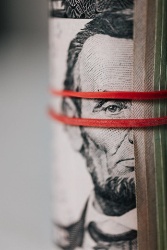Al-Shabaka:Farming Palestine for Freedom
Al-Shabaka:Farming Palestine for
Freedom
July 5, 20120 comments
by Rami Zurayk,
Samer Abdelnour, Alaa Tartir
Al-Shabaka: The Palestinian
Policy Network
05/07/2012
The West Bank’s agricultural potential is well known. Less is written about the potential of the Gaza Strip, even though its output could reach an estimated 300,000 tons of mixed produce, fruits and grain each year. And very little attention is paid to the pastoral lifestyle of the Bedouin.
The farming sector began to be affected when thousands of Palestinians left their land in the West Bank and Gaza to work in Israel and in the Israeli settlements, partly due to higher wages offered as part of the Israeli economic integration and containment policies, and partly because Israeli restrictions reduced local opportunities. After the Oslo Accords, Area C, which constitutes 62% of the West Bank and includes the most of the fertile land, natural resources and water, came under full Israeli military and settler control.
In Gaza, Israel’s “security” belt constitutes 17% the Strip and is also under its full Israeli military control. Some 30% of Gaza’s agricultural land remains inaccessible, up from 25% three years ago. The zone’s rainfed crops included wheat, barley, beans, various vegetables, olives, almonds, citrus trees, and most of the Gaza Strip’s animal production. Israel’s 2008-9 bombardment of Gaza increased the amount of inaccessible agricultural land to 46%.
Of the approximately 13,000 Palestinian Bedouin in the OPT, more than 80% are refugees and 55% of those living in Area C are food insecure. The Bedouin have lost almost all access to lands due to settlement expansion. Most have demolition orders pending against their homes, and lack secure access to water and electricity. Many face severe security risks, including exposure to land mines.
In addition, Arabs in general mistakenly believe that the desert is useless. The reality is that the Bedouin’s pastoralist lifestyle characterizes sustainability, using the land in an efficient and productive manner and maintaining it for future generations.
Although not as devastating as Israel’s colonization and dispossession PA and donor policies have still been pernicious. Conventional economic theories are applied to the occupied territories, expecting them to thrive by specializing in the production of goods in which they have a competitive productive advantage.
Once the shift had been made to export markets, repeated Israeli border closures destroyed harvests and farmers’ livelihoods and ended the Western-inspired dream of “billions” in revenue from Palestinian luxury exports of flowers and strawberries as well as other less exotic agricultural products.
Official neglect further condemned the sector. A recent report noted that, since the PA’s establishment the amount allocated to the agriculture sector did not exceed 1% of the annual budget, the bulk going to staff salaries, as another study revealed. Agriculture’s contribution to GDP dropped from around 13.3% in 1994 to 5.7% in 2008.
Thus, Palestine’s poverty is a politically engineered human catastrophe in which economic growth and freedom are contradictory endeavors. How is it possible to consider diverting land and resources to produce flowers and strawberries for European markets while 88% of Gazans receive food aid and 75% are malnourished?
When Palestinians can grow their own food on their own land and are able to fish their sea, displacing Israeli produce from the market, they will be food secure. Staples such as olives, za’atar, figs and date palms are deeply rooted in the culture and history of the land. They provide nourishment during difficult times, require little in terms of water and maintenance, and are well adapted to the climate.
There is a need for a Right to Farm Campaign that will mobilize local communities as well as solidarity activists, agricultural unions and donors for a resistance economy that is deeply connected to the unique cultures, history, land, and political aspirations of the Palestinian people. These are many ways to simultaneously cultivate local livelihoods, reduce aid dependency, and exert the Palestinian right to the land, even under conditions of settler colonialism and prolonged occupation (see here, here, and here.)
Unlike the rhetoric and mirage of “state” or “institution” building, a farming policy can bring clarity and direction to Palestinian development because it would connect Palestinian consumers, farmers, Bedouin, and refugees and exiles in a resistance economy. Employment would be generated and local markets strengthened, regaining some measure of control over the Palestinian economy.
The nature of Palestinian dispossession demands that the path to freedom be the land and everything associated with it: farms and fields, desert and sea, farmers and Bedouin, milk and olives.
Lebanese activist, author, and agronomist
Rami Zurayk joins Al-Shabaka Policy Advisors Samer Abdelnour
and Alaa Tartir to tackle the way the agricultural sector
has been devastated by Israeli policies as well as the
Palestinian Authority (PA) and donor policies and practices
— in “Farming Palestine for Freedom”.
Read
the Full Report here
ENDS


 Save The Children: MYANMAR - Heavy Rains Heighten Risk Of Disease Outbreaks Following Earthquake
Save The Children: MYANMAR - Heavy Rains Heighten Risk Of Disease Outbreaks Following Earthquake UNICEF Aotearoa NZ: Aid Cuts Threaten Fragile Progress In Ending Maternal Deaths, UN Agencies Warn
UNICEF Aotearoa NZ: Aid Cuts Threaten Fragile Progress In Ending Maternal Deaths, UN Agencies Warn Médecins Sans Frontières: Concern Over Planned Deportation Of Afghan Refugees In Pakistan
Médecins Sans Frontières: Concern Over Planned Deportation Of Afghan Refugees In Pakistan European Cultural Centre: Time Space Existence 2025 - A Collective Call To Repair, Regenerate, And Reuse
European Cultural Centre: Time Space Existence 2025 - A Collective Call To Repair, Regenerate, And Reuse John P. Ruehl, IMI: What Will Tech Moguls Do With Their Wealth?
John P. Ruehl, IMI: What Will Tech Moguls Do With Their Wealth? ITUC: Workers Must Not Pay The Price Of An Imposed Trade War
ITUC: Workers Must Not Pay The Price Of An Imposed Trade War